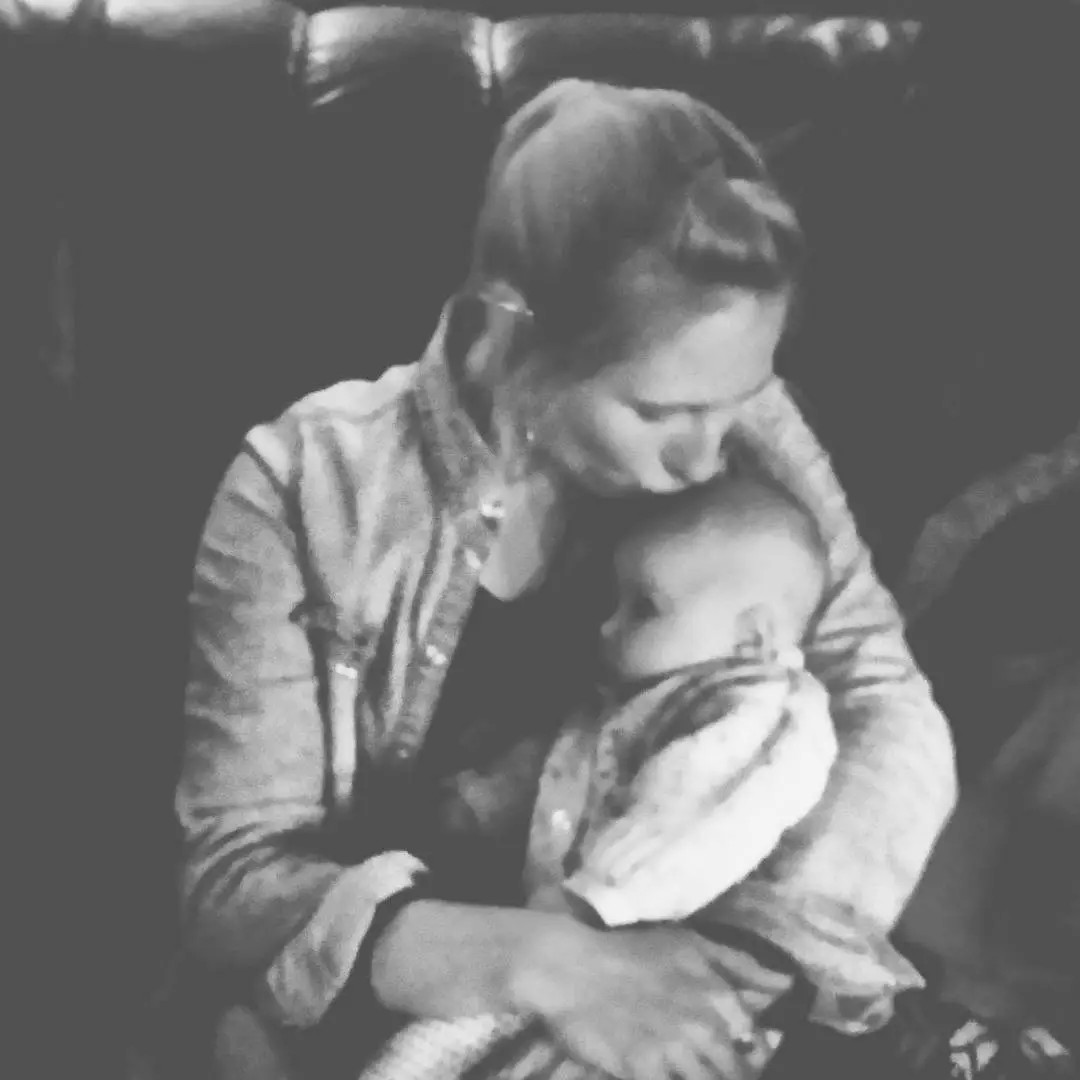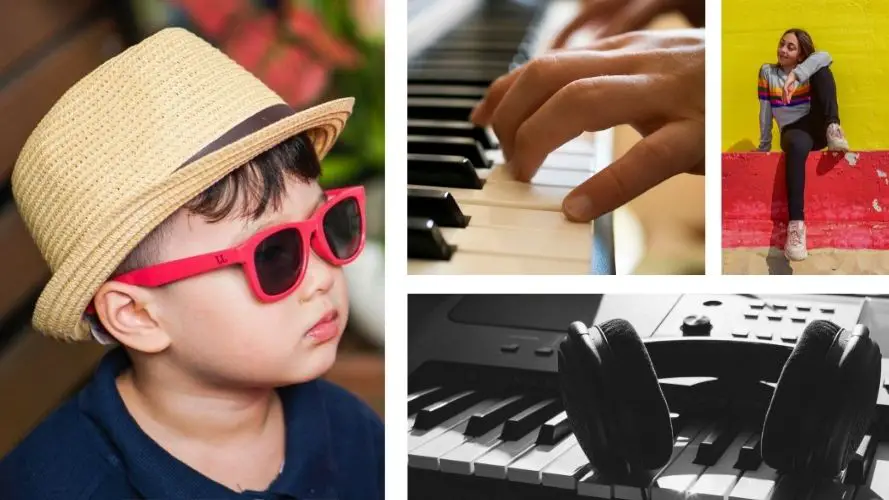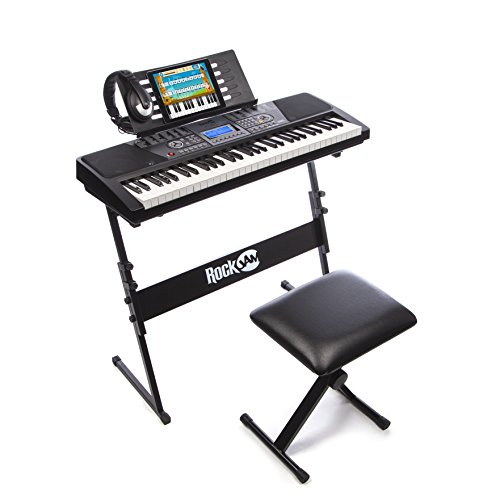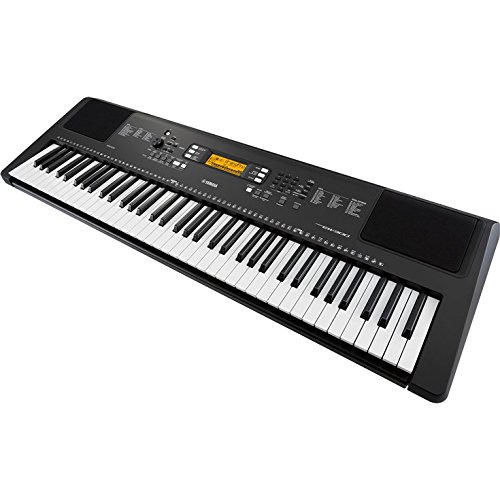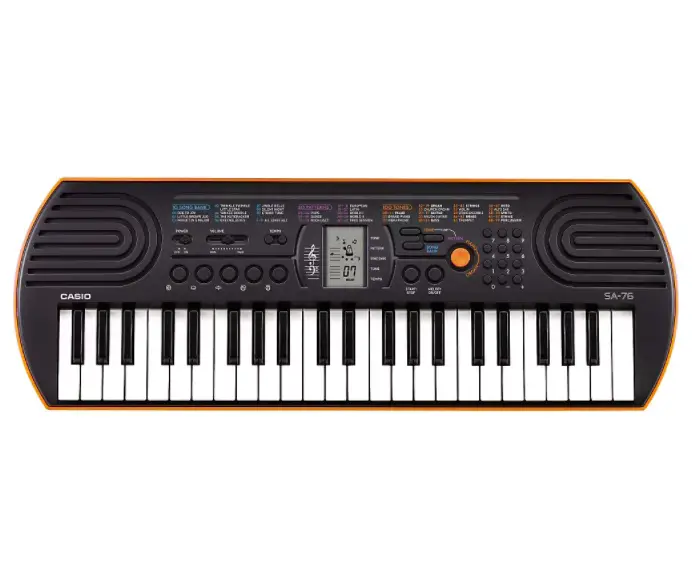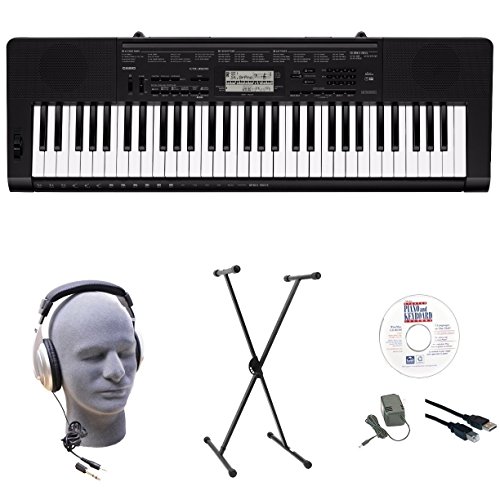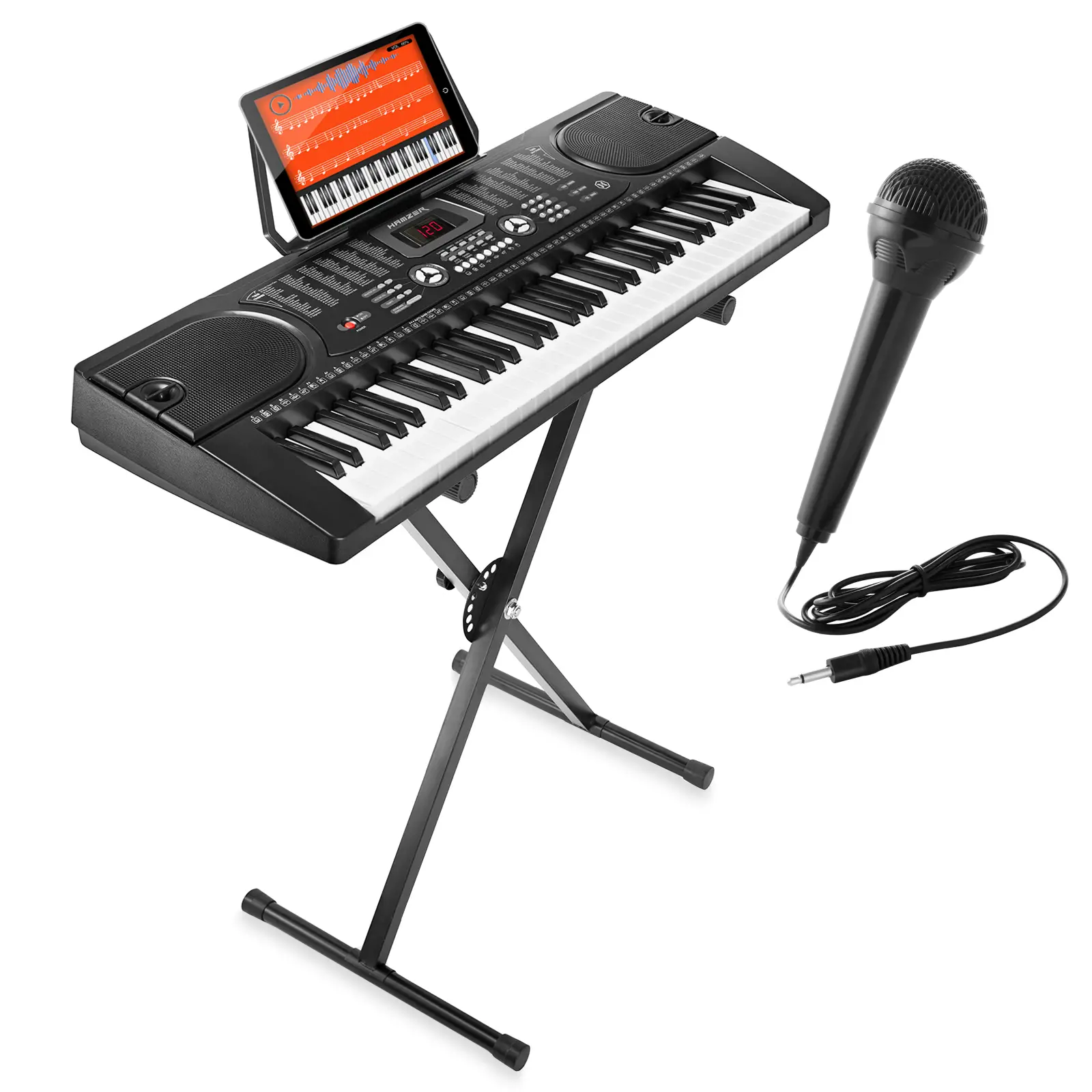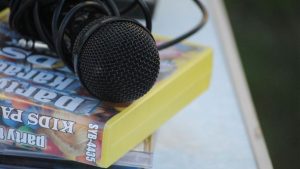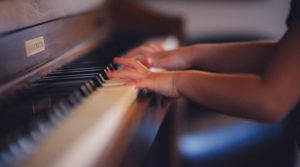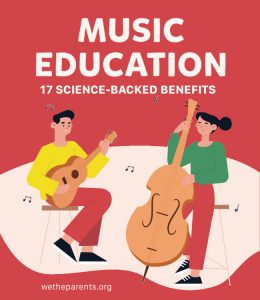A beginner keyboard is a great way to introduce piano playing to children without risking a large investment into a full-size piano (which may not get used). The best beginner keyboards provide an authentic playing experience and should allow your child to develop their playing skills while, hopefully, sparking a musical passion.
With this in mind, it’s important not to view keyboards as toys, as cheap models live up to their price tag. They’re flimsy and don’t provide a realistic playing experience, so they’re not good for learning to play the piano. We’ve assembled a list of keyboards great for new learners and experienced pianists alike, so dive in.
In this article:
What to look for when buying a keyboard
The goal of a good beginner keyboard is to inspire your kids’ musical interest while providing a decent playing experience so that they begin to learn. (These are the primary goals, others are far less important!)
With that goal in mind, let’s first focus on three major elements:
1) Useful & appropriate functionality
Avoid overly complicated keyboards with tons of functions. They tend to distract children from the actual musical side of keyboard playing – not to speak of driving you up the wall as they test out 200 crappy-sounding demo songs! It can also be a turn-off if they need to ask for help constantly because they can’t figure out how to even turn the thing on.
Having some proper and decent functionality like touch sensitivity, a metronome, a selection of quality “voices” (eg, strings, brass, woodwind), nice reverb, and some good drum sounds, will be enough to keep your kiddo engaged.
In short, you are looking for a keyboard with a limited set of usable and useful functions; neither too many or too few.
2) Sound quality
Sound quality plays a huge role in any instrument, real or electronic.
A rich and beautiful sound will immerse your kids, motivating and inspiring them to play more. On the contrary, a low-quality sound, “cheap” sound will demotivate your kids and they may lose interest.
Ideally, the instrument sounds from the keyboard should be as close as possible to the real acoustic instruments that are being imitated. Of course, no keyboard can reproduce the sound of the original instrument 100%, but some do a much better job than others.
In our reviews, we’ve chosen keyboards where the sounds closely simulate the original instruments.
3) Built-in lessons & method books
Some keyboards come with easy-to-follow built-in lessons. These are often accompanied by method books. The benefit here is that kids can learn the basics of keyboard technique and theory without a teacher during the early stages. Once your kid has built up some confidence, then they will be ready for a piano teacher.
Read also: The Best Toddler Piano Toys
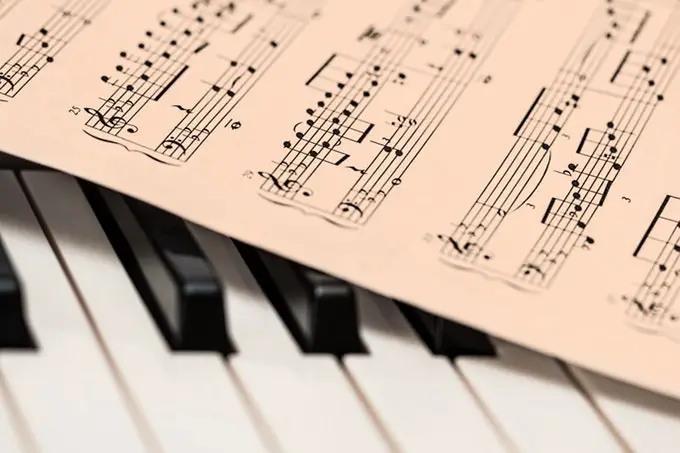
Additional features to consider
Okay, now we’ve covered the main three elements, let’s talk about some other features you’ll want to consider:
- Number of keys – Most keyboards are either 44-key, 54-key, 61-key, or 76-key. The number of keys isn’t really important in the beginning stage since the beginner songs aren’t hard enough to use a wide range of keys. A 61-key keyboard is plenty and your kids can play a thousand songs with it.
- Touch sensitivity – This means that the harder you press the key, the louder the sound emitted. Touch sensitivity is a MUST HAVE feature in a keyboard if you’re really serious about learning music. That said, younger kids’ fingers aren’t strong and so touch sensitivity doesn’t play as an important role for them.
- Total weight – Keyboards are relatively light (for adults anyway), and so moving them won’t be a huge problem. You can easily pack it up and place it anywhere you want since it just takes a small space.
- Bench/stool, stand, and chair – You need to pay attention to these things because some retailers sell them separately. The stand and bench allow you to adjust the height of the keyboard or your seat. This is important and ensures your kids have the right posture when practicing.
- Integration with other devices – If you want your kids to perform on a stage or learn with computer or smartphone apps, then pay attention to these features.
- Headphones – In the beginning stage, your kiddo will probably create a cacophony of awful noise. To keep the peace, get them practicing with headphones. (Ultimately, though, it’s best for your kids’ ears to hear the sounds without wearing headphones.)
- Adapter, battery power – Almost every keyboard has the US-standard 110-120 volt adapter power. Some have battery slots for keyboard-only usage. However, just using the power adapter is enough.
- Number of tones (instrument sounds) and beats (rhythms) – Counterintuitively, less is best. Since your goal is to inspire a love of playing music in your kids, too many tones and beats just distract them from practicing. The main thing to look for is a piano tone that’s as true as possible.
- Number of demo songs – Ignore. Totally useless!
- Recording and playback function – Not very important. It is seldom if ever used by children.
Now we’ve covered the major and minor points of consideration, let’s dive into the reviews.
Our pick of the best beginners keyboard
Best overall
Price range: $$
Instrument Sounds: 100
Keys: 61 / Non-weighted
Touch sensitive: No
Sound quality: 7/10
Built-in lessons: Yes
Accessories included: Stand, Stool, Headphones, Power adapter.
The RockJam 61-Key (check price on Amazon) is our top pick. It has a decent array of useful functions, good sound quality, great built-in lessons, and comes with all the accessories you need. It provides all of this a competitive price. It’s definitely a solid choice for any family.
This keyboard has some great integration tablet apps such as Joytune and Piano Maestro. You also get 2-months free face to face lessons from Take Lesson and 3-months free membership of Skoove. Both are great services which can help to get your kid off to a headstart with their playing.
What we love
- All accessories are included
- Strong and adjustable stand
- Comes with headphones to preserve the peace
- Great in-built lessons and learning aids for both kids and entry-level adults
Watch for
- The default volume is maximum when you turn on the keyboard.
- Non-touch sensitivity
- Non-weighted keys
Best quality beginners' keyboard
Price range: $$$$$
Instrument Sounds: 574
Keys: 76 / Weighted
Touch sensitive: Yes
Sound quality: 9/10
Built-in lessons: Yes
Accessories included: None (not even power adaptor)
The Yamaha PSR-EW300 (check price on Amazon) is a worthy successor to the YPG-235 – the most popular portable keyboard in U.S. history. This upgrade maintains the exquisite touch and sound quality but brings modern tech integration. It truly is the king of beginner keyboards. In fact, the term “beginner” can only be used loosely here because this high-quality keyboard will comfortably accompany them until they are advanced pianists.
The sounds on PSR-EW300 are beautiful and realistic, creating an immersive playing experience. Also, the keys are weighted and touch sensitive which means playing this keyboard is very similar to playing a real piano. Of course, this quality comes with a bigger price tag. Well worth it if you can stretch your budget.
The built-in lessons are “Keys to Success” which are based on teaching techniques developed by Yamaha over many years. They are known for their short and easy, step-by-step learning curve where budding performers learn how to play entire songs. It’s a well-renowned and sophisticated pedagogy.
What we love
- Realistic sounds with touch-sensitivity
- Weighted keys that make it feels like a digital piano
- Built-in lessons are good
Watch for
- It doesn’t come with any other accessories, so you’ll probably need to purchase the additional kit
Best for budget
Price range: $
Instrument Sounds: 100
Keys: 44 / Non-weighted mini keys
Touch sensitive: No
Sound quality: 7/10
Built-in lessons: Yes
The Casio SA76 (check price on Amazon) is a great choice for a young child. It’s light and compact design makes it easy to transport or pack away. And, while it’s the cheapest keyboard we reviewed, it does come bundled with learning materials including a learning book and stickers for the keys. All this makes it well worth it for younger beginners.
Naturally, the playing mechanism and sound quality are not as close to the real thing as other keyboards, but, that said, it’s certainly good enough to introduce your kiddo to basic principles of keys.
What we love
- Great course book for kids with stickers to make learning easier
- Looks fun and cute – younger kids will love it
- Very affordable
Watch for
- Keys are non-touch sensitivity
- Only play easy songs since the number of keys is just 44
Best mid-range option
Price range: $$$
Instrument Sounds: 400
Keys: 61 / Non-weighted
Touch sensitive: Yes
Sound quality: 7.5/10
Built-in lessons: Yes
Accessories included: X-style stand, HP30 closed-cup headphones, Power supply
The Casio CTK3500 (check price on Amazon) is a solid sounding keyboard that ships with a stand, power adapter, and pair of HP30 closed-back headphones.
It’s similar to the RockJam 61-Key keyboard in terms of build and sound quality; notably, though, CTK3500 has a higher price tag but provides less effective learning materials.
One stand out feature is the built-in microphone with recording and playback abilities; worth considering if your kid loves to sing and may want to try their hand at simultaneous singing and playing Headphones help your kids practice while keeping your home peaceful and quiet, and are a nice addition that isn’t always included with electronic instruments despite their utility — it’s worth noting, though, that their quality is a bit lackluster.
What we love
- Decent accessories mean you’ll have everything you need to get started
Watch for
- Headphones aren’t very durable
Worthy mention
Price range: $
Instrument sounds: 127
Keys: 61
Touch sensitive: No
Sound quality: 7/10
Built-in lessons: Yes
Accessories included: Microphone, stand, 4′ aux cord, stickers
An impressive pick that’s also beginner-friendly, the Hamzer (check price on Amazon) has built in speakers that can rock the house. The integrated learning system on this pick is designed to give beginners an introductory course into playing the piano, while intermediate-level users can brush up on their basics and hone their skills with the 255 timbres and 255 rhythms the keyboard offers. It’s a pick that helps them master finger control, and they can even use vibrato, sustain and ensemble effects to enhance their sound. Recording and playback are both possible through microphone and headphone jacks, and a microphone with a 4′ cord is included with the keyboard.
What we love
- It’s useful and enjoyable to both new and experienced players
- The speakers have great audio quality
Watch for
- There’s a plethora of timbres, rhythms, and demo features; this can be great for some players but distracting for some young learners
And the winner is…
The RockJam 61-Key Electronic Keyboard (check price on Amazon) is our favorite beginners’ keyboard. Unlike others, it comes with all the accessories you need, plus some great inbuilt music tutorial features. All this means that for your money, your kiddo has everything they need to get going. It is also durable and comes with advanced features, so it will easily last them until they are proficient players who are ready for a real piano.
Learning keyboard: Tips for beginners
Right, let’s assume you’ve bought the right keyboard and got it set up.
Now the real fun – and challenge – begins.
But wait:
Should you seek out a teacher immediately or simply help your kids to learn themselves at home?
Nowadays, the inbuilt music lessons that come with keyboards are pretty sophisticated. They are often enough for you and your kids to learn the basics of music theory and playing techniques. Then, when you hire a teacher, your kids will be ready to hit the ground running and will improve much faster.
Where to start when learning at home with your child?
First thing first, have fun. Let your kiddo fool around and enjoy learning how the keyboard works.
The fastest way to turn your child OFF learning any musical instrument is to go in heavy and apply pressure from the get-go.
Instead, wait until they have familiarized themselves with how to switch it on and make a noise. Once, they’ve had some self-directed fun, then you can gently move on to your first lesson.
Step one is to introduce the pitch names of musical notes. This will allow them to read sheet music and play the corresponding notes on their new keyboard.
This great visual guide by Sublimelody shows you all you need to know about reading piano keys and notes:

That should get you and your child up and running.
Okay, that’s it for my guide to the best beginner keyboard for your kids. If you have a question about anything from this guide, feel free to comment and I will answer you ASAP.

